Wedding photography is a specialized field that combines technical expertise, artistic vision, and interpersonal skills to capture the essence of one of the most significant days in a couple’s life. A wedding photographer’s role extends beyond merely taking pictures; it’s about telling a compelling story, preserving emotions, and creating timeless memories.
1. Understanding the Role of a wedding photography
A wedding photographer is entrusted with documenting the events of a wedding day, from the intimate moments of preparation to the jubilant celebrations of the reception. The primary objective is to capture authentic emotions, candid interactions, and the intricate details that make each wedding unique. This requires a deep understanding of lighting, composition, timing, and the ability to anticipate and seize fleeting moments.
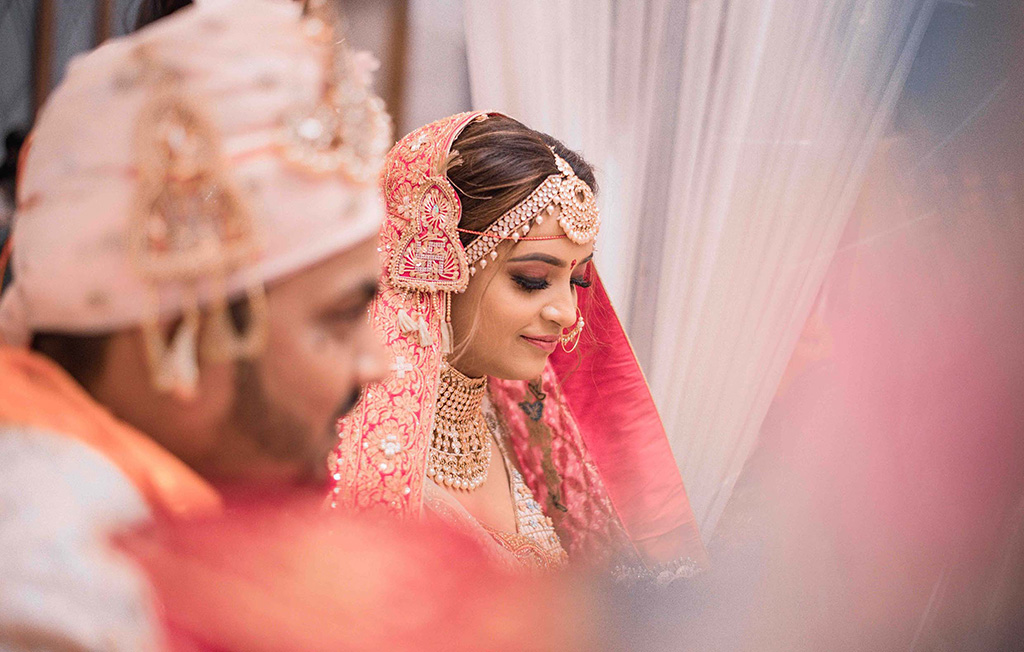
2. Essential Skills and Qualities wedding photography
- Technical Proficiency: Mastery over camera settings, lighting techniques, and post-processing software is crucial. Understanding how to adapt to various lighting conditions, such as the harsh midday sun or the soft glow of the golden hour, ensures that photos are both flattering and true to the moment.
- Artistic Vision: Beyond technical skills, a wedding photographer must have an eye for composition, color, and storytelling. This involves framing shots creatively, capturing candid moments, and producing images that evoke emotion and narrative.
- Interpersonal Skills: Building rapport with clients and guests facilitates natural interactions and genuine expressions. A photographer’s demeanor can influence the comfort level of subjects, leading to more authentic and relaxed photographs.
- Organization and Planning: Weddings are multifaceted events with tight schedules. A photographer must be organized, punctual, and adept at coordinating with other vendors to ensure that all essential moments are captured without disrupting the flow of the day.
3. Preparation Before the Wedding Day wedding photography
- Client Consultation: Engaging with the couple before the wedding helps in understanding their vision, preferences, and any specific shots they desire. This discussion also provides insight into the wedding timeline, key events, and important guests.
- Venue Scouting: Visiting the wedding and reception venues ahead of time allows the photographer to assess lighting conditions, identify potential shooting locations, and plan for any logistical challenges.
- Equipment Check: Ensuring that all equipment is in optimal condition is vital. This includes cameras, lenses, flashes, memory cards, and backup gear. Having redundancies in place safeguards against unforeseen equipment failures.
- Shot List Creation: Collaborating with the couple to create a shot list ensures that no significant moment is overlooked. This list serves as a guide but should be flexible to accommodate the day’s dynamic nature.
4. Capturing the Wedding Day wedding photography
- Arrival and Setup: Arriving early provides ample time to set up equipment, photograph venue details, and capture candid moments of guests arriving.
- Pre-Ceremony Moments: Photographing the bride and groom during their preparation offers intimate insights into their emotions and the anticipation of the day.
- Ceremony Coverage: Documenting the ceremony requires discreetness and respect. It’s essential to capture key moments like the exchange of vows, rings, and the first kiss without intruding on the sanctity of the event.
- Post-Ceremony Portraits: Utilizing the time between the ceremony and reception for couple portraits and group shots maximizes natural light and ensures a relaxed atmosphere.
- Reception and Candid Shots: The reception is filled with dynamic moments—first dances, speeches, and candid interactions. Capturing these requires attentiveness and the ability to anticipate action.
5. Lighting Techniques wedding photography
Lighting plays a pivotal role in photography, influencing mood, clarity, and overall image quality.
- Natural Light: Utilizing available light, especially during the golden hour (the period shortly before sunset), can produce warm and flattering tones. citeturn0search8
- Artificial Lighting: In low-light situations, using flash or continuous lighting ensures that subjects are well-lit without harsh shadows. Understanding how to balance ambient and artificial light is essential for natural-looking images.
- Creative Lighting: Incorporating techniques like backlighting, silhouettes, or using reflectors can add depth and creativity to photographs.
6. Posing and Directing wedding photography
While candid shots capture genuine emotions, posed photographs provide timeless portraits.
- Guided Posing: Offering gentle direction helps subjects feel comfortable and appear natural. Phrases like “turn your shoulder slightly” or “look over there” can elicit flattering poses.
- Candid Moments: Allowing moments to unfold naturally often results in the most heartfelt images. Observing and anticipating interactions without interference is key.
- Group Shots: Organizing family and bridal party photos requires clear communication and efficiency to ensure all desired combinations are captured.
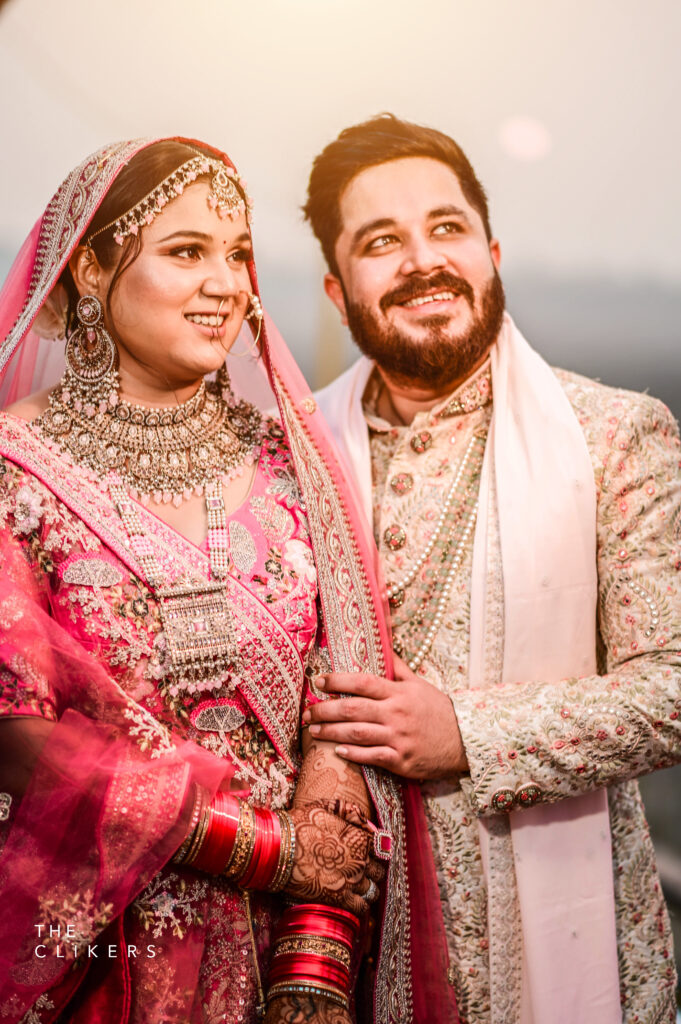
7. Post-Processing and Editing wedding photography
The editing phase transforms raw images into polished memories.
- Selection: Reviewing all captured images and selecting the best representations of each moment is the first step.
- Color Correction: Adjusting white balance, exposure, and contrast ensures that images reflect the true colors and ambiance of the wedding.
- Retouching: Subtle edits, such as removing blemishes or distracting elements, enhance the subjects without altering their natural appearance.
- Stylistic Choices: Applying consistent filters or presets can give the wedding album a cohesive and personalized feel.
8. Delivering the Final Product wedding photography
- Album Creation: Designing a wedding album involves curating images that tell a story, balancing close-ups with wide shots, and ensuring a logical flow.
- Digital Galleries: Providing couples with online galleries allows them to view, download, and share their photos conveniently.
- Prints and Products: Offering high-quality prints, canvases, or other products gives couples tangible memories to cherish.
9. Legal and Ethical Considerations wedding photography
- Copyright and Usage Rights: It’s essential to discuss and establish the usage rights of the photographs with the couple, ensuring both parties understand how images can be used or shared.
wedding photography: Positive and Negative Aspects Explored
Wedding photography is an integral part of every couple’s big day, as it preserves memories that last a lifetime. While it has the power to capture beautiful, timeless moments, it also comes with its own set of challenges. As with any profession or creative endeavor, there are both positive and negative aspects of wedding photography. In this detailed exploration, we will break down the various pros and cons of wedding photography, providing a comprehensive understanding of both the rewarding and difficult sides of the profession.
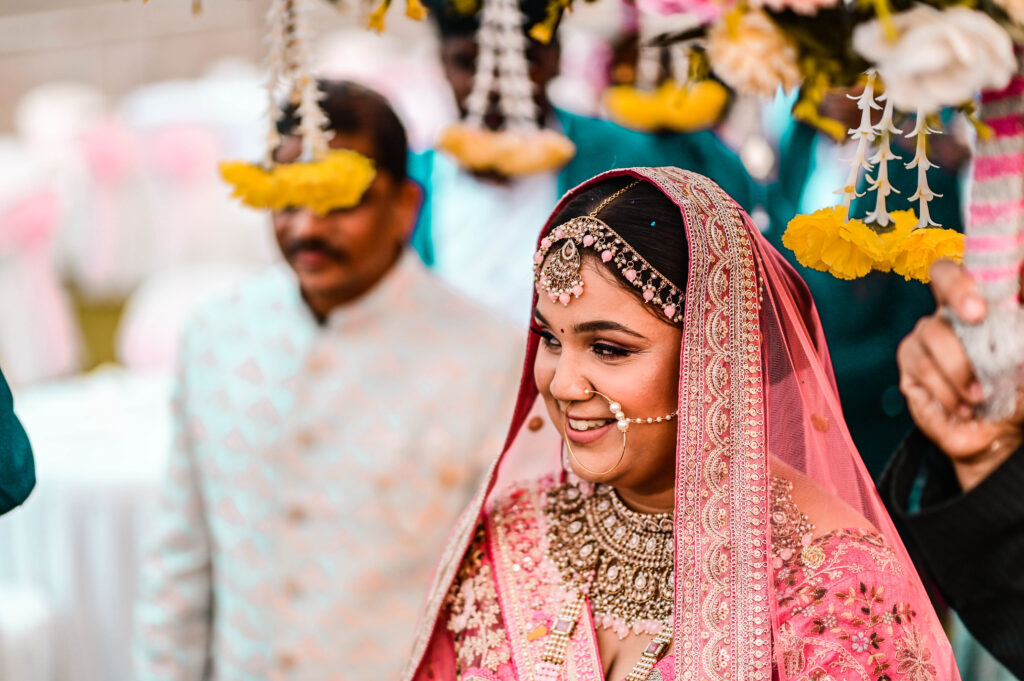
Positive Aspects of wedding photography
Capturing Precious Moments wedding photography
One of the most rewarding aspects of wedding photography is the ability to capture deeply emotional and meaningful moments. Weddings are one of the most significant events in a person’s life, and the photographs taken during the ceremony, reception, and other key moments become cherished memories. These images serve as a visual timeline of a couple’s journey, allowing them to relive their wedding day whenever they choose.
The photographer’s ability to preserve moments like the bride’s first look, the tear in the groom’s eye during the vows, or the couple’s first dance creates a legacy. These images not only evoke personal memories for the couple but also become a family heirloom for future generations. There’s immense satisfaction in knowing that your work will be treasured for decades, even centuries, to come.
Creative Expression wedding photography
Wedding photography is an art form that allows photographers to express their creativity. Every wedding is different, providing endless opportunities for creativity and self-expression. From choosing unique angles, experimenting with lighting, or using creative editing techniques, wedding photographers have the freedom to craft beautiful, one-of-a-kind images.
Many wedding photographers develop their unique style, which sets them apart in a competitive industry. Whether it’s a photojournalistic approach, fine art style, or contemporary posing, there are countless ways for a photographer to infuse their artistic vision into the wedding day. This creative freedom is not only enjoyable but also personally fulfilling for many photographers.
Building Meaningful Relationships wedding photography
Another positive aspect of wedding photography is the opportunity to build close, meaningful relationships with clients. Since weddings are highly personal events, photographers often become more than just hired professionals. They form bonds with couples and families, sometimes even becoming friends in the process.
These relationships are particularly fulfilling when photographers have the opportunity to document a couple’s journey over time—such as taking engagement photos before the wedding or photographing their growing family in the years to come. Building these long-term relationships creates a sense of community and allows photographers to experience the evolving story of a couple’s life together.
Financial Rewards wedding photography
Wedding photography can be a financially rewarding career or side business. Many professional photographers charge premium rates for their services, given the expertise, equipment, and time commitment required to capture a wedding day. The potential for earning is significant, especially if the photographer is skilled and well-regarded in the industry.
Furthermore, wedding photographers often have the opportunity to offer additional services, such as engagement shoots, bridal portraits, or album design, which can further boost their income. By building a solid portfolio and gaining a reputation for high-quality work, photographers can establish a lucrative business and even secure repeat clients, such as friends and family members of previous clients.
Personal Satisfaction and Fulfillment wedding photography
For many wedding photographers, the personal satisfaction of their work is a key motivator. Wedding photography provides a sense of fulfillment that comes from creating something meaningful and lasting. Being entrusted with capturing one of the most important days in a couple’s life is a significant responsibility, and successfully fulfilling that responsibility brings immense personal pride.
Additionally, the emotional fulfillment of being part of a couple’s special day can be incredibly gratifying. Many photographers find joy in witnessing the raw emotion of the wedding day and knowing that their images will evoke joy and nostalgia for years to come.
Working in a Dynamic Environment wedding photography
Weddings are dynamic events filled with action, energy, and excitement. As a wedding photographer, you are constantly moving and adapting to the ever-changing environment of the day. From capturing candid moments between the couple and their families to adjusting to the varying lighting conditions, wedding photographers are often faced with new challenges and the need for quick thinking.
For those who thrive in fast-paced, ever-changing environments, this aspect of wedding photography can be highly enjoyable. Every wedding is different, meaning that no two days are alike, and photographers must continuously learn and evolve in response to the needs of the event.

Negative Aspects of wedding photography
Long and Demanding Hours wedding photography
One of the most significant drawbacks of wedding photography is the long and demanding hours. A wedding day is typically a marathon, starting early in the morning with preparations and ending late at night after the reception. Photographers often work for 10–12 hours or more, sometimes without taking breaks.
The need to be present for every major moment—such as the first kiss, the exchange of vows, the father-daughter dance, and the bouquet toss—requires the photographer to remain focused and alert throughout the day. After the event, photographers must also spend significant time editing photos and preparing the final album, which can take several weeks. This demanding schedule can lead to physical exhaustion and burnout, especially during busy wedding seasons.
High Pressure and Stress wedding photography
Wedding photographers face a high level of pressure, as they are responsible for capturing one of the most important days in a couple’s life. With so many emotional moments at stake, there’s little room for error. A single missed shot or poorly composed photo can lead to significant disappointment for the couple, and photographers are often under tight time constraints to get the perfect shot.
The stress of working in such a high-pressure environment is compounded by the need for technical precision. Photographers must be on top of their game at all times, whether dealing with difficult lighting, challenging weather conditions, or other obstacles. They also need to navigate interpersonal dynamics between the couple, their families, and the wedding planners, which can sometimes add an extra layer of complexity to the job.
Inconsistent Income wedding photography
While wedding photography can be financially rewarding, it also comes with periods of inconsistent income. Weddings are seasonal, and photographers may experience lulls between peak wedding months. This can make it difficult to budget and maintain a stable income year-round, especially for independent photographers who rely solely on wedding bookings.
The income from wedding photography can also vary depending on location, demand, and competition. A photographer just starting out may struggle to secure high-paying clients, while those with established reputations can command premium rates. The feast-or-famine nature of wedding photography can make it challenging to plan for the long term.
Dealing with Unpredictable Factors wedding photography
A wedding day is full of unpredictable factors that can affect a photographer’s ability to perform at their best. From unexpected weather changes to technical difficulties with equipment, photographers must be prepared to handle any number of unforeseen circumstances. For example, rain on an outdoor wedding day can force a photographer to change plans and shoot in a less ideal location.
Additionally, weddings can be emotionally charged environments, and there are often interpersonal conflicts between family members or guests. Navigating these situations tactfully can be difficult, but photographers need to remain professional and focused on their task despite any underlying tensions.
Dealing with Difficult Clients wedding photography
Not every couple is easy to work with, and wedding photographers may occasionally encounter difficult clients. Expectations may be unrealistic, or the couple may have specific ideas about how their wedding should be documented that are not in line with the photographer’s style. Some clients may also be overly critical of the final product, leading to dissatisfaction and, in some cases, a strained working relationship.
While most couples are appreciative of the work done, the occasional difficult client can create a challenging situation for photographers. Managing these situations professionally and ensuring that the client is satisfied can require a great deal of patience and diplomacy.
Physical and Emotional Fatigue wedding photography
Wedding photography can be physically demanding, as photographers often spend long hours on their feet, carrying heavy camera equipment, and adjusting to various physical environments (such as tight spaces or awkward angles). The physical strain can take a toll, especially during a full day of wedding coverage.
Emotional fatigue is another aspect of wedding photography that is often overlooked. Capturing deeply emotional moments, such as the vows, the bride’s walk down the aisle, or the speeches, can be emotionally draining for photographers. Constantly immersing oneself in others’ emotions can lead to burnout over time, especially for photographers who work many weddings in a short period.
Wedding photography is much more than just capturing a couple’s special day through a camera lens. It is about preserving memories, telling a story, and encapsulating the emotions, love, and happiness that surround one of the most significant milestones in a person’s life. In this long-form exploration of wedding photography and love, we will dive into its significance, the artistic and technical elements involved, and how photographers capture love through their work.
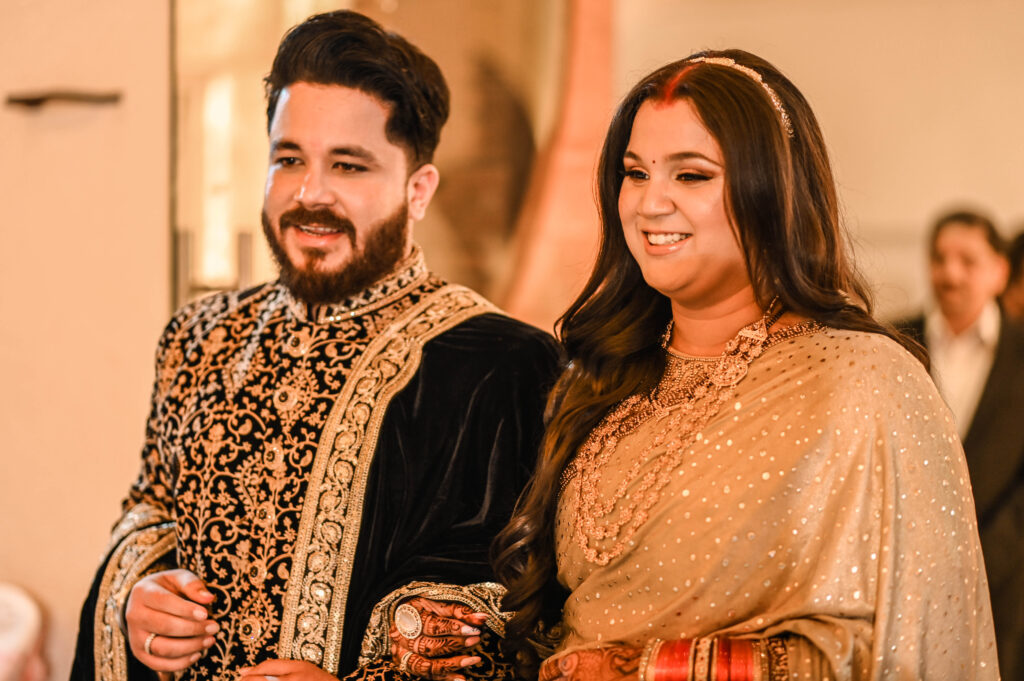
The Significance of wedding photography
Weddings are monumental moments in a couple’s life, representing the union of two people, often surrounded by family and friends. As such, wedding photography plays a pivotal role in memorializing these occasions. More than just a visual record, it serves as a visual narrative of the emotions, traditions, and connections present on the wedding day.
The significance of wedding photography goes beyond simply snapping pictures of the ceremony and reception. These images serve as a time capsule, preserving the energy, joy, and raw emotion of the day. They allow couples to relive their wedding day for years to come. In fact, wedding photos are often one of the few physical objects that remain after the event, cherished for generations.
Each photo tells a story—of love, connection, and commitment. From the candid moments between the bride and groom to the laughter and tears shared among family and friends, wedding photography is a reflection of the uniqueness of each couple and the depth of their relationship.
Love Through the Lens wedding photography
Love is often an intangible emotion, one that cannot always be put into words. However, through the art of photography, it can be captured visually. Wedding photographers are artists who specialize in telling this love story, often without the couple even realizing how expertly these emotions are being preserved.
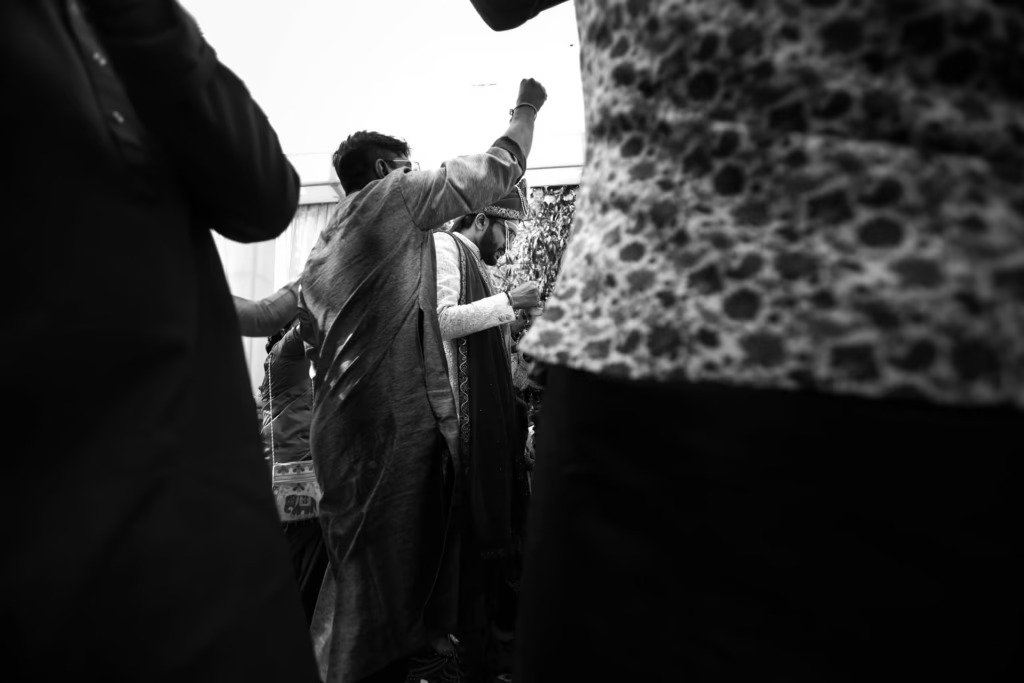
The Impact of wedding photography on the Couple’s Relationship
Wedding photography has a lasting impact on a couple’s relationship, as the images captured become tangible representations of their love and commitment. After the wedding, couples often return to their wedding photos time and again, reliving the joy and emotions of the day. These images can spark conversations, revive old memories, and strengthen the bond between partners.
In addition to the emotional value, wedding photos often become heirlooms, passed down through generations. They serve as a reminder of the couple’s love and commitment, not only for themselves but also for their children and grandchildren. The photos taken on a wedding day are often shared during anniversaries, family gatherings, and milestones, continuing to tell the story of the couple’s life together.
Conclusion: The Timeless Love Captured in wedding photography
Wedding photography is not just a profession; it is a means of preserving the most significant moments in the lives of a couple. It is about capturing love—the fleeting, intangible emotions that define a relationship—and turning those moments into timeless works of art.
The essence of wedding photography lies in its ability to document and celebrate the love between two people in a way that words cannot fully express. Through the lens of a skilled photographer, couples can relive the magic of their wedding day for years to come, cherishing the memories and emotions encapsulated in each image. Whether through candid moments, intimate portraits, or carefully crafted detail shots, wedding photography tells the unique love story of each couple, immortalizing the bond that defines them.
Wedding photography offers an exciting and rewarding career, filled with the opportunity to capture one of the most important days in a couple’s life. It provides financial rewards, creative expression, and the personal satisfaction of preserving memories for a lifetime. However, the profession also comes with its own set of challenges, including long hours, high pressure, unpredictable factors, and dealing with difficult clients.
Ultimately, wedding photography requires a balance of technical skill, artistic creativity, and emotional intelligence. For those who are passionate about both photography and weddings, it can be an incredibly fulfilling and rewarding profession. But like any job, it comes with its own set of ups and downs. Recognizing and managing these positive and negative aspects is key to thriving in the competitive world of wedding photography.







